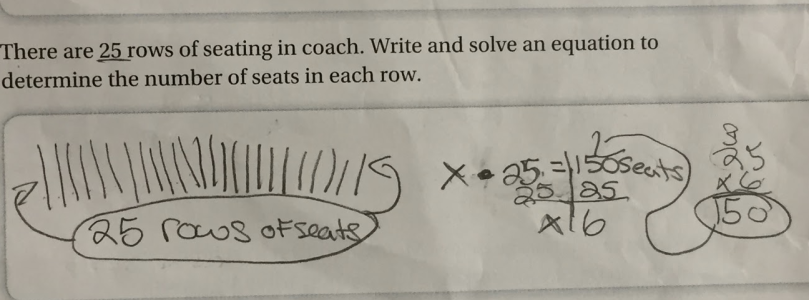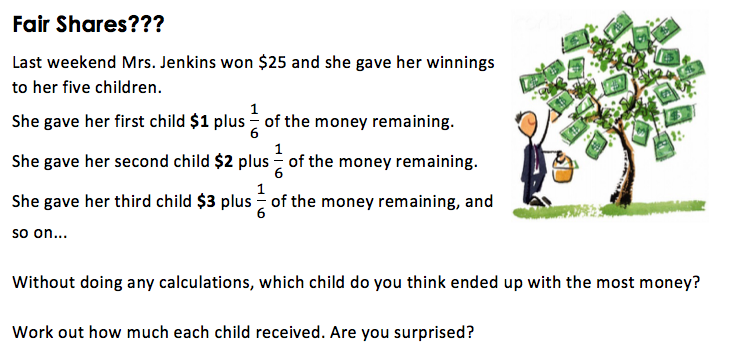I worked with a 6th grade student in our In School Intervention classroom today. I do this every day. A boy had been assigned a set of pages from a workbook and had begun the work on his own. From what he had already completed, I could tell that this student had a strength in math. He was unsure of what he had done, so he was looking for validation from me. We looked at this next problem together:

He said, “so you gotta subtract right?” I said, “yes you do, but that’s if you’re looking for the answer. This is asking you to write an equation.”
He began to write y = x – 14.
I talked to him about variables, and how many unknowns were in this problem and he could tell that there was only one.
I asked him to draw a picture of the situation. Here is what he drew.

HMMMM….(maybe they’ve recently worked on area and perimeter???)
I then asked him to reread the problem and prompted him to draw the house and the airport.
He drew the line between the house and the airport, and I had to do some questioning to get him to realize it represented the distance of 29 miles. We reread the problem and I asked him about the 14 and how he would represent that on the drawing.
He thought to himself for a moment and then began drawing the tick marks. I could tell that he was counting them. He labeled the 14th tick mark and the 29th, and then circled the 14.
I drew the bracket and asked him what that would represent. He said with a questioning tone, “the remaining distance?” Thinking for a minute, he then said, “oh I know…would it be 14 + x = 29?”
We did one more problem together that we represented with a drawing, and then I left him to be independent in the rest of his work.
He came over to show me one of his drawings and the equation he had written:

(In a previous part of the problem they were told there are 150 seats in coach seating.)
We high-fived!
Teaching students how to create math drawings is a valuable sense-making tool that can be over looked in math class. I know numerous reading language arts teachers that ask students to draw pictures to portray what’s going on in a story. We need more of that in math class.







